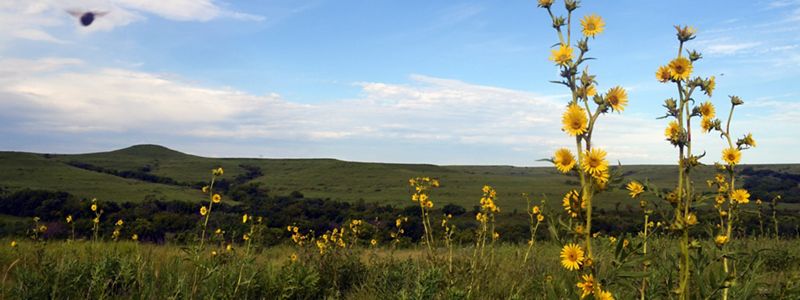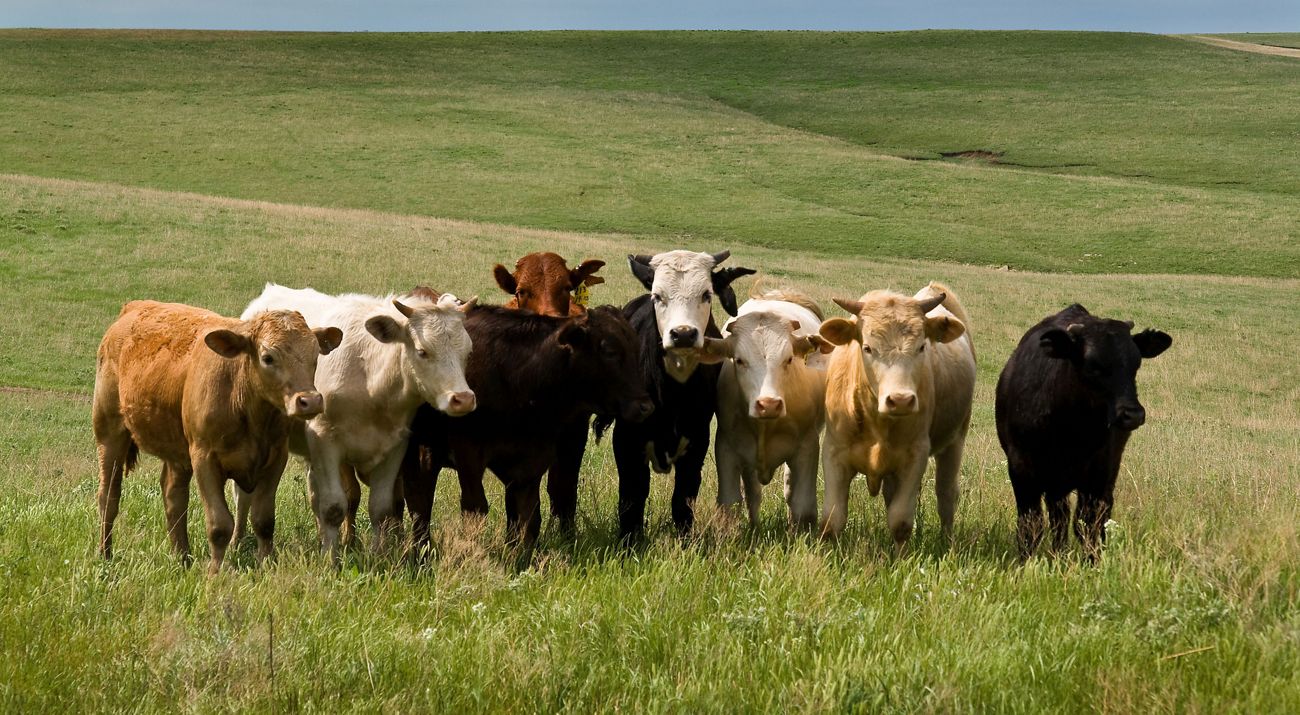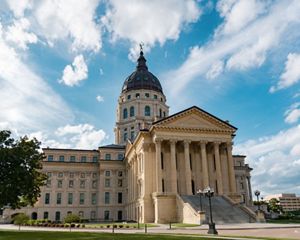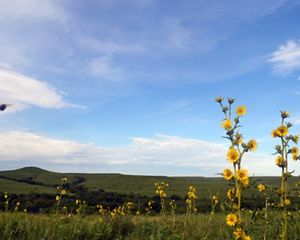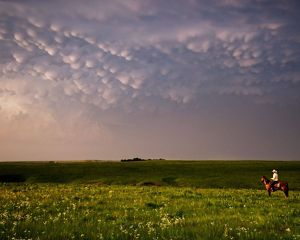Flint Hills Ranching to Save the Tallgrass Prairie
The Flint Hills Legacy Conservation Area is the first under the America’s Great Outdoors program.
The tallgrass prairie of eastern Kansas, known as the Flint Hills, is vast, breathtakingly wild and ecologically rich. This four-million-acre landscape comprises nearly 80% of what’s left of the world’s tallgrass prairie; only 4% of its historic expanse remains unplowed, undeveloped and relatively unchanged.
The Flint Hills offer dramatically rolling panoramas of breeze-bent grasses, wild flowers and unbounded skies—a grand grassland wilderness where prairie-chickens, bison, seldom-seen birds, rare fishes and a host of other wild creatures find bountiful habitats. The tallgrass prairie’s strength and resilience has been acquired through eons of fire, grazing and extreme temperature and precipitation. It’s a place where people connect with the prairie and its wildness.
Today, invasive plants, tree encroachment, subdivision and energy development pose serious threats to this beautiful landscape.
“America’s tallgrass prairie ecosystem is the most altered major habitat type in the country, in terms of acres lost,” said Alan Pollom, The Nature Conservancy's former Kansas state director. “Less than 4% of the tallgrass prairie remains in America, and most of that—more than two-thirds—lies within the Flint Hills. It’s absolutely a top priority to conserve this special place.”
Quote: Ken Salazer
The Flint Hills Legacy Conservation Area will protect land, water and wildlife while creating new opportunities for economic prosperity in the region.
Ranching to save the Tallgrass Prairie
Over the past decade, many Flint Hills ranchers have exercised a bold vision to conserve the tallgrass prairie, by granting conservation easements on their lands. Those easements protect the Flint Hills by precluding the types of development which threaten the region’s ecology, as well as its ranching culture.
In 2010, The U.S. Department of Interior’s Fish and Wildlife Service, in cooperation with TNC, the Kansas Department of Wildlife and Parks, private landowners and other partners, announced the creation of the Flint Hills Legacy Conservation Area (FHCLA). The easement-based conservation area compliments Flint Hills conservation easement work by TNC and other land trusts and may someday entail more than a million acres.
“Thanks to the tireless efforts of private landowners, stakeholders, state agencies and the U.S. Fish and Wildlife Service, the tallgrass prairies of the Flint Hills will forever be protected as a crown jewel of America’s Great Outdoors,” said former Secretary of the Interior Ken Salazar.
The Flint Hills Legacy Conservation Area was created in 2010 to conserve working lands by recognizing the vital role farmers and ranchers play as stewards of the nation’s fish and wildlife resources. At an announcement ceremony, Secretary Salazar noted that the Flint Hills effort “will protect land, water, and wildlife while creating new opportunities for economic prosperity in the region.”
Rancher Mike Collinge said, “The Flint Hills has a strong and rich history of preserving the ranching heritage and the tallgrass prairie ecosystem. The U.S. Fish and Wildlife Service's conservation easement program would provide a voluntary opportunity to preserve this heritage for future generations."
Quote: Mike Collinge
The Flint Hills has a strong and rich history of preserving the ranching heritage and the tallgrass prairie ecosystem.
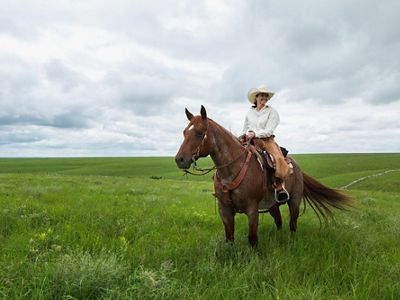
Private Lands Conservation
Learn MoreProtecting Habitat through Easements
TNC owns three preserves totaling more than 20,000 acres within the Flint Hills Legacy Conservation Area. Since 2006, TNC has also led a community-based conservation program to address incompatible development and invasive species in the region. Through this initiative, TNC has secured 46,565 acres in conservation easements. TNC, USDA and partner land trusts hold a combined total of more than 100,000 acres of perpetual conservation easements in the Flint Hills.
The Flint Hills Legacy Conservation Area will help private landowners conserve habitat for more than 100 species of grassland birds and 500 plant species, and it will help to ensure the region’s sustainable ranching culture. Conservation easements are binding legal agreements that typically prohibit fragmenting activities, such as subdivision and commercial development, but allow for continued livestock grazing and haying. Under conservation easements, landownership and property rights, including control of public access, remain with participating landowners; and participating properties remain on local tax rolls.
We Can’t Save Nature Without You
Sign up to receive monthly conservation news and updates from Kansas. Get a preview of Kansas' Nature News email.
